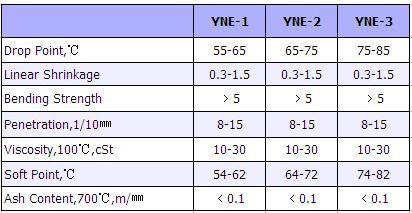Big Discount Precision Casting Wax to Colombia Importers
Short Description:
Product Detail
Product Tags
Big Discount Precision Casting Wax to Colombia Importers Detail:
Precision Casting Wax mainly is used for precision mechanical process with zero allowance or very limited allowance. We can not adopt general casting technique, but can only adopt zero allowance casting or precision casting. Because of the product’s structure is very delicate and complex especially in bejeweled with golden and silver, such as diamond ring, brooch, earring etc.
The characteristics of precision casting wax are: good coating property, no denaturalization to be heated, good flow ability, good thermal stability, and well surface finish.
Product detail pictures:

Our products are widely recognized and trusted by users and can meet continuously changing economic and social needs for Big Discount Precision Casting Wax to Colombia Importers, The product will supply to all over the world, such as: Surabaya , Mombasa , Qatar , Abiding by our motto of "Hold well the quality and services, Customers Satisfaction", So we provide our clients with high quality products and excellent service. Please feel free to contact us for further information.
Pneumatisk skjutspjällsventil med 4-20mA positionerare.
More at https://auto-parts.quickfound.net/
“FUNCTIONING OF MAJOR COMPONENTS – PRINCIPLE OF PRESSURE DIFFERENTIAL, ABILITY OF SYSTEM TO RESIST ROAD SHOCK AND KICKBACK OF STEERING WHEEL”
Public domain film from the National Archives, slightly cropped to remove uneven edges, with the aspect ratio corrected, and mild video noise reduction applied.
The soundtrack was also processed with volume normalization, clipping reduction, and equalization.
US Army training film TF 9-2254
NEW VERSION with improved video & sound: https://www.youtube.com/watch?v=7nMmH18uAwc
https://en.wikipedia.org/wiki/Power_steering
…Francis W. Davis, an engineer of the truck division of Pierce Arrow began exploring how steering could be made easier, and in 1926 invented and demonstrated the first practical power steering system. Davis moved to General Motors and refined the hydraulic-assisted power steering system, but the automaker calculated it would be too expensive to produce. Davis then signed up with Bendix, a parts manufacturer for automakers. Military needs during World War II for easier steering on heavy vehicles boosted the need for power assistance on armored cars and tank-recovery vehicles for the British and American armies
Chrysler Corporation introduced the first commercially available passenger car power steering system on the 1951 Chrysler Imperial under the name “Hydraguide”. The Chrysler system was based on some of Davis’ expired patents. General Motors introduced the 1952 Cadillac with a power steering system using the work Davis had done for the company almost twenty years earlier…
Most power steering systems work by using a hydraulic system to steer the vehicle’s wheels. The hydraulic pressure typically comes from a gerotor or rotary vane pump driven by the vehicle’s engine. A double-acting hydraulic cylinder applies a force to the steering gear, which in turn steers the roadwheels. The steering wheel operates valves to control flow to the cylinder. The more torque the driver applies to the steering wheel and column, the more fluid the valves allow through to the cylinder, and so the more force is applied to steer the wheels.
One design for measuring the torque applied to the steering wheel has a torque sensor — a torsion bar at the lower end of the steering column. As the steering wheel rotates, so does the steering column, as well as the upper end of the torsion bar. Since the torsion bar is relatively thin and flexible, and the bottom end usually resists being rotated, the bar will twist by an amount proportional to the applied torque. The difference in position between the opposite ends of the torsion bar controls a valve. The valve allows fluid to flow to the cylinder which provides steering assistance; the greater the “twist” of the torsion bar, the greater the force.
Since the hydraulic pumps are positive-displacement type, the flow rate they deliver is directly proportional to the speed of the engine. This means that at high engine speeds the steering would naturally operate faster than at low engine speeds. Because this would be undesirable, a restricting orifice and flow-control valve direct some of the pump’s output back to the hydraulic reservoir at high engine speeds. A pressure relief valve prevents a dangerous build-up of pressure when the hydraulic cylinder’s piston reaches the end of its stroke.
Some modern systems also include an electronic control valve to reduce the hydraulic supply pressure as the vehicle’s speed increases; this is variable-assist power steering.
The steering booster is arranged so that should the booster fail, the steering will continue to work (although the wheel will feel heavier). Loss of power steering can significantly affect the handling of a vehicle. Each vehicle owner’s manual gives instructions for inspection of fluid levels and regular maintenance of the power steering system.
The working liquid, also called “hydraulic fluid” or “oil”, is the medium by which pressure is transmitted. Common working liquids are based on mineral oil.







